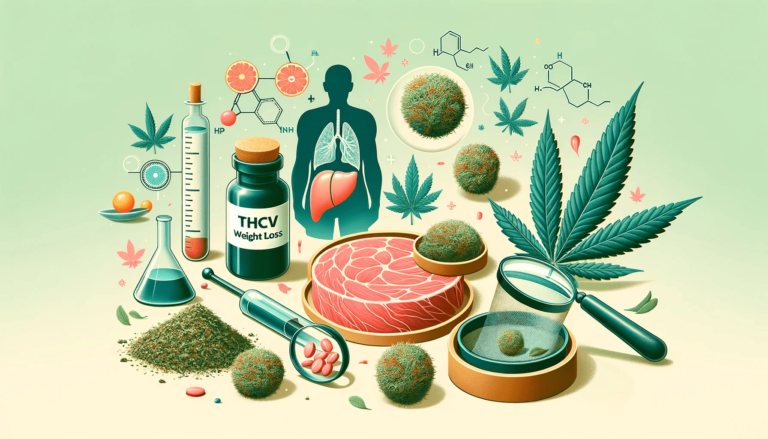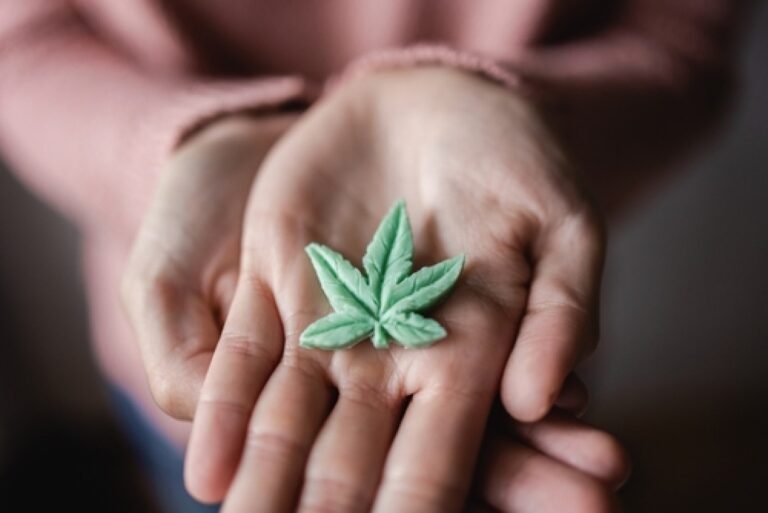You’ll have to forgive me for my use of the worn storybook tropes, but I feel it is time for revision of the way we talk about menopause. It is no coincidence that the villain of so many Disney movies is an unhinged woman nearing or past “the change of life”, subconsciously warning children of the horrors of aging. In media of all kinds, perimenopausal women are depicted as, to quote Cruella, “miserable” all the time – literal hot messes. And while it is true that menopause marks a major transition in a person’s life, often bringing a variety of symptoms that impact physical, emotional, and mental health, it can also be a powerful time for self-care and tuning into the inner wisdom of our bodies. As a family nurse practitioner and cannabis specialist, I help people in perimenopause and post-menopause reframe this time of change as a new era of empowerment and growth by giving them tools to manage their symptoms and regulate their nervous systems.
Before initiating a cannabis regimen to manage peri- or postmenopausal symptoms, it is important to have any unusual signs such as irregular vaginal bleeding, abdominal bloating / pain, or new onset anxiety / insomnia, checked out by your primary care provider or gynecologist to rule out underlying conditions. Additionally, hormone testing may reveal that supplementation with estrogen or progesterone could be helpful for you. For those who cannot or who do not wish to utilize hormone replacement (or those who have incomplete relief with HRT), therapeutic cannabis has deservedly gained attention as a potential option for managing symptoms associated with perimenopause and postmenopause.
How Cannabis May Help
Recent studies indicate that a significant number of women are turning to cannabis to manage menopausal symptoms. A Harvard Health survey involving over 250 perimenopausal and postmenopausal women revealed that approximately 79% used cannabis to alleviate menopause-related symptoms, with the most common symptoms treated being sleep disturbance and anxiety (Dahlgren et al, 2022). I see a common pattern in my own practice, where uterus-owners in middle-age continue to be a growing category of our clients who are getting much-needed symptom relief with a therapeutic cannabis regimen.
There’s an old joke about the Seven Dwarves of Menopause, which the actress Suzanne Somers referenced in her book The Sexy Years. Based on my observation (and personal experience), their names are Itchy, Bitchy, Weepy, Sleepy, Achy, Forgetful, and Frigid. Let’s remember that these Dwarves are not demons sent to terrorize us, but our temporary roommates who need a little care and attention. Targeted supplementation with cannabis can help bring us back into balance during this time of physical change as our bodies adapt to decreased estrogen and progesterone production. Cannabis contains active compounds called cannabinoids, terpenes, and flavonoids. These compounds interact with the body’s endocannabinoid system (ECS), an incredible ally which regulates various physiological functions, including mood, pain perception, sleep, and temperature control.
Acannability’s Periodic Table of Cannabis Molecules
For those interested in understanding the various cannabis compounds and their potential effects, Acannability has developed an interactive Periodic Table of Cannabis Molecules. This educational tool provides detailed information on 51 cannabis molecules and their precursor acids, offering insights into their medicinal benefits. By exploring the table, users can gain a deeper understanding of how cannabinoids, terpenes, and flavonoids interact within the body and contribute to therapeutic effects. As I discuss strategies for soothing each of the Seven Dwarves of Menopause with cannabis below, I will mention specific compounds that could be helpful, linking back to the periodic table where you can find more information. But first, some general guidance:
Considerations and Precautions
Before using cannabis for symptom relief, women should consider the following:
- Consulting a Healthcare Provider: It’s essential to discuss cannabis use with a doctor, particularly if taking other medications.
- Legal Status: Cannabis laws vary by location, so users should verify local regulations.
- Dosing: Starting with a low dose and gradually adjusting is advisable to find the most effective amount. This is especially important when using THC – most people get symptom relief with doses between 2.5 -10mg of THC. If you find yourself regularly needing 20mg or more of THC for sleep or pain, I recommend speaking with a medical cannabis clinician to help you optimize your results and prevent tolerance.
- Potential Side Effects: Some side effects include dizziness, dry mouth, increased appetite, and, in some cases, mild paranoia with high THC doses.
Methods of Cannabis Consumption
People considering cannabis for menopausal symptoms have several options for consumption methods:
- CBD Oils and Tinctures: Provide systemic relief with easily adjustable dosing.
- Edibles: Offer long-lasting effects but have a slower onset.
- Vaping or Smoking: Provides quick onset (with a shorter duration of action than ingested methods), though inhalation may not be suitable for everyone.
- Topicals: CBD- or THC-infused creams may help with localized pain.
- Suppositories and Lubricants: Designed for vaginal application to relieve dryness and discomfort.
Soothing the Seven Dwarves
Sleepy – Enhancing Sleep Quality
Sleep disturbances are common during menopause due to hormonal imbalances and night sweats. Research suggests that CBD may help promote relaxation and reduce anxiety
(Kisiolek et al,2023), while THC and CBN can aid sleep initiation (Bonn-Miller et al, 2023). Appropriate dosing for bedtime is crucial, as excessive THC can disrupt sleep cycles and too low of a dose of CBD may be stimulating (Nicholson et al, 2004).
The ECS also plays a role in temperature regulation, suggesting that cannabis might help stabilize body temperature fluctuations at night and potentially impacting the frequency or severity of hot flashes. However, reports have documented that cannabis may have negative or positive impacts to menopausal vasomotor symptoms and more research is needed to determine if cannabis can be helpful for hot flashes. Take note if you feel that cannabis is making you feel more hot or sweaty – it could exacerbate this issue for some people and interfere with sleep.
Look for products and cultivars that contain the following compounds for better sleep:
– CBD – THCΔ9 – CBN – Myrcene – Linalool – Terpinolene
Bitchy & Weepy – Mood Stabilization and Anxiety Reduction
Hormonal changes can contribute to mood swings, anxiety, and depression. Cannabinoids, especially CBD, have been shown to interact with serotonin receptors, which play a key role in mood regulation. We also know that people with anxiety have differences in their ECS, including variations in receptor expression, endocannabinoid production, and overall endocannabinoid tone (Wilker et al, 2016; Thornton et al, 2021). Many women report improved emotional stability and reduced irritability when using cannabis. According to the above-mentioned Harvard Health study, 46% of women found cannabis beneficial for mood and anxiety regulation (Dahlgren et al, 2022). Dosing is important here with THC again: while lower doses of THC can improve anxiety and depression, high doses can worsen symptoms. I often recommend products with a 5:1 or 2:1 ratio of CBD:THC for best results treating anxiety and depression. People who are sensitive to THC may prefer products with a higher CBD:THC ratio, such as 20:1. Remember to start low and go slow with dosing – 2.5mg of THC is a good initial dose for most people.
Look for products and cultivars that contain the following compounds to improve mood:
– CBD – Bisabolol – Geraniol – Linalool – Limonene – Caryophyllene
Achy – Pain and Inflammation Relief
Joint and muscle pain are common menopause-related complaints. Cannabinoids, particularly CBD and THC, are known for their anti-inflammatory and pain-relieving properties, which may help alleviate pain and stiffness. For chronic pain, I recommend layering a routine low-dose oral product with a topical and/or inhaled product for breakthrough symptoms if needed. Utilizing terpene-rich products can help you get more anti-inflammation and analgesia without having to raise your THC dose, which can prevent adverse effects like dizziness or paranoia.
Look for products and cultivars that contain the following compounds for pain and inflammation:
– CBD – THCΔ9 – CBG – Myrcene – Caryophyllene – Humulene – Pinene – Geraniol
Frigid – Boosting Libido and Sexual Health
Lower estrogen levels can cause vaginal dryness, discomfort during intimacy, and reduced sexual desire. Some research suggests that cannabis can enhance sexual pleasure by increasing blood flow, reducing anxiety, and heightening sensation. According to one 2024 survey of 410 women, “72.8% reported that cannabis use before partnered sex increased orgasm frequency, 67% stated that it improved orgasm satisfaction, and 71% indicated that cannabis use made orgasm easier” (Mulvehill & Tishler, 2024).
CBD-infused lubricants and THC-based tinctures are gaining popularity as potential solutions, with some new products combining cannabis with other botanicals known to improve libido, such as maca or damiana. Low dosing is best here for THC yet again, as high doses can contribute to oral and vaginal dryness. Terpene-rich strains and preparations may be especially helpful, as these compounds have been shown to increase relaxation and improve blood flow.
Look for products and cultivars that contain the following compounds for improved sexual function:
– CBD – THCΔ9 – Caryophyllene – Myrcene – Limonene – Linalool – Pinene
Forgetful – Supporting Cognitive Function and Brain Health
Many women experience cognitive issues during menopause, often referred to as “brain fog.” While research is ongoing, some studies suggest that cannabinoids may have neuroprotective properties that support cognitive function and may help prevent neurodegenerative diseases. Recent research suggests that perimenopause triggers increased neuroinflammation and interferes with estrogen-regulated neurological functions (McCarthy & Raval, 2020). Many of our clients have found relief from brain fog using a combination of cannabinoids and supplements like ashwaganda, bacopa, gingko biloba, l-theanine, and omega-3 oils.
Look for products and cultivars that contain the following compounds for improved cognitive function:
– CBD – THCV – CBG – CBC – Caryophyllene – Terpinolene – Pinene – Farnasene
Conclusion
With its potential to improve sleep, regulate mood, relieve pain, enhance libido, and decrease neuroinflammation, therapeutic cannabis is emerging as a viable option for people dealing with perimenopausal and postmenopausal symptoms. If you are one of those individuals who is dealing with the Seven Dwarves, I hope you are inspired to sit down and listen to what these uninvited houseguests need – and perhaps even offer them some cannabis. Remember, individual responses to this plant vary, and it is crucial to approach its use with caution, ensuring safety and effectiveness through professional guidance and education. As research continues to expand, I believe that cannabis will become an integral part of holistic menopausal care. I have seen so many people achieve symptom improvement or total resolution with the right regimen. Happily ever after is possible when you are empowered with the mindset and tools to take charge of your own mental and physical health. For further insights into cannabis compounds and their effects, refer to Acannability’s Periodic Table of Cannabis Molecules.
Check the PDF File for sources.










